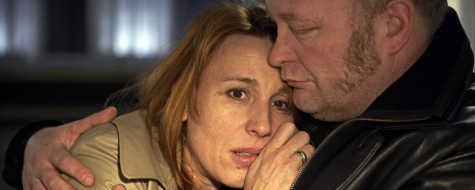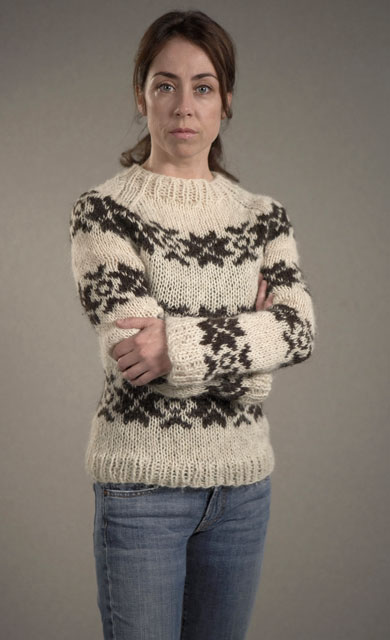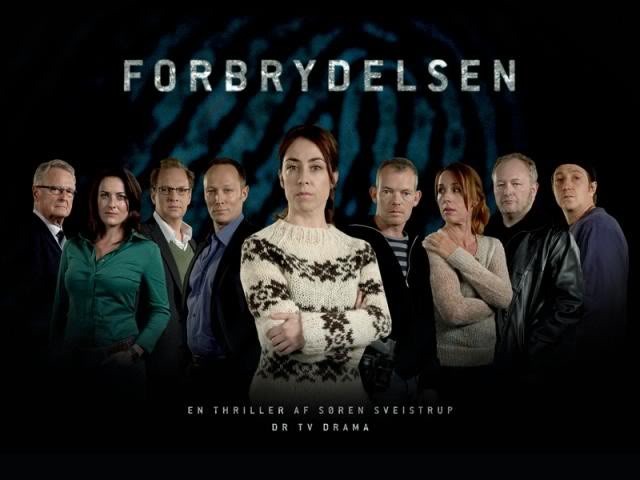Forbrydelsen: Something rotten in the state of Denmark. And it’s good.
Denmark in general, and Copenhagen in particular, does not have the reputation of a hot-bed of crime. I travelled through the country on a number of occasions in my student, Inter-railing years, and the things that come to mind when you think about the country are stuff like Hans Christian Anderson, Legoland and Victor Borge. The most disturbing thing to come out of the country is probably Lars Von Trier and…well, he needed to come out of the country to express his weirdness. Otherwise, crime seemed limited to drunken students removing the head from the Little Mermaid statue. And then came Forbrydelsen – literally “The Crime,” more loosely translated as The Killing. Danny Kaye must be spinning in his grave
A teenage girl goes missing, and her corpse is found in the trunk of a car belonging to the campaign of a Copenhagen mayoral candidate. But the main difference between the show and just about every other police procedural on TV – not that, as we’ll see, Forbrydelsen is simply this – is its pacing. Normally, a case gets opened, investigated and closed in a single episode, which means you gallop through clues, suspects, red herrings and solutions in 45 or so minutes. Not so here, where the crime is painstakingly investigated over twenty 55-minute episodes. Police attention at various times targets the victim’s classmates, a teacher, the candidate, her secret boyfriend, and it looks bleak for each of them in turn.
But this aspect is only maybe one-third of the show. Just as important is the depiction of the family’s grief, as they go through the process of burying their daughter, and trying to come to terms with the unexpected lightning-bolt that has struck their family. An aspect almost entirely buried in other genre shows, is depicted here in unflinching detail. The parents (played with an aching level of intensity by Bjarne Henriksen and Ann Eleonora Jørgensen, right) are damaged, on a very core level: he sets out for revenge on a suspect, she is even more unable to cope.
The political angle centres on candidate Troels Hartmann (Lars Mikkelsen), who finds his aspirations of office potentially derailed – rightly or wrongly – by his proximity to the case, and who has his own secrets, irrelevant to the case, which it may end up exposing. His attempts to keep his campaign rolling, in an atmosphere of suspicion and intrigue, are another key facet, as alliances are formed and destroyed, while loyalties are tested (and often found wanting). Albeit it’s one that may pose confusing problems to the overseas viewer, unaware of the internal machinations of Danish politics. Is there any difference between the “Liberals” and the “Moderates”? Can we get some kind of scorecard?
The focus, however, is Sophie Lund (Sofie Gråbøl – it rhymes with “trouble”), who is up there in the pantheon of great female TV detectives, alongside Detective Superintendent Jane Tennison, and..er, Cagney and Lacey? She is fully committed to the task at hand, even though it starts on what was supposed to be her final day on the job, before moving with her son and boyfriend to Sweden. However, something about the case resonates with her, and she puts everything aside, pursuing the truth with admirable determination and tenacity. While her bosses may believe the truth has been found, she won’t stop picking away, until all the layers of misdirection have been erased.
It would have been easy for the show to fall into the standard “female police officer” clichés: sexual tension with a colleague, struggling to balance work and family life, etc. However, the show doesn’t bother with either: Lund is so single-mindedly devoted to the task as hand, as to be a borderline sociopath. She doesn’t so much deal with people, as tolerate them, and in that way resembles the other Scandinavian heroine of recent note, Lisbeth Salander. There are some exceptions – Lund does have more sympathy for the victim’s family than some of her colleague, trying to keep them informed when it might be best not to. On the whole, though, as her son notes, she’s more comfortable dealing with the dead, and as the series progresses, her isolation from those around her becomes near-complete.
I also have to mention her Faroese sweater, a swatch from which (or a Lund-alike) is at the top of this piece. It’s almost a character in itself: just like Colombo’s grubby raincoat. We expressed concern when it was badly wounded by a knife-wielding attacker (with no sense of dress sense), and were pleased to see that it made a full recovery, and was back, good as new, in later episodes.
Then there’s Meyer, the man who will replace her – just as soon as Lund leaves, which gets postponed more often than a James Cameron release date. He initially seems a bit of a dick, an abrasive ‘bad cop’, but there are moments where his humanity shows through, such as his wife turning up at the police station bearing bananas and his fibre pills. He has his moments too, and by the time we reached the final few episodes, we were warming to Meyer, and his odd loyalty to Lund, even as she ploughs on her own trail, without as much as the courtesy of bothering to inform him of her intentions.
The show originally came out in early 2007 and was a huge hit in Denmark – one-third of the entire population watched the final episodes. The BBC bought the rights, but despite its success, both at home and elsewhere in Europe, hadn’t screened it. The success of Wallander, and I suspect, word of of a US remake (more on which below), eventually convinced them to show it, albeit buried on BBC Four. It became an unexpected hit there: unlike most shows, the ratings actually grew over the course of its airing, in 10 double-eps, reaching over 600,000 for the finale, compared to less than 450,000 for its debut. To put that into context, it’s higher than Mad Men on the same channel. The BBC will be screening the second series later this year, and we can’t wait: we’ll need to find something to fill the the gap in our televisual schedule. Spiral sounds promising.
Gråbøl may be slightly familiar, if you have an encyclopaedic memory for obscure European movies. If so, you may recall a 1997 Ewan McGregor film, Nightwatch, playing a student who takes a job as a night watchman at a morgue, only to be implicated as a serial killer. It was a remake of a Danish film of the same name, three years previously, which I saw at the time. Gråbøl was the student’s girlfriend – Patricia Arquette in the remake. S’funny how, 17 years later, she is now involved in another Danish crime thriller deemed worthy of a remake for the America market, with AMC now screening their version of the story, with Mireille Enos taking on Gråbøl’s role. as “Sarah Linden”. We rewatched it recently, and it’s just…wrong seeing her a) young, b) blonde and c) generally happy.
We’ve been watching that as well, and it’s solid if entirely unnecessary. This version does compact the story down, into 13 x 45-minute episodes, relocating it from Copenhagen to Seattle, and thus far has increased the “political shenanigans” angle, which is probably my least favorite aspect. There is certainly potential for confusion: at one point, Lund discovers a crucial piece of evidence hidden in a globe. We wondered why she was going back in there, until we realized that it was Sarah Linden we’d seen find evidence there – something which happened in Week 3 of the US version, took place about ten episodes later in the Danish version.
We’re curious to see if they change who the killer is in the AMC series – executive producer Veena Sud told said, “We are kind of diverging and creating our own world, our world of suspects and, potentially, ultimately who killed Rosie Larsen.” Maybe they can then sell it back to Denmark?



